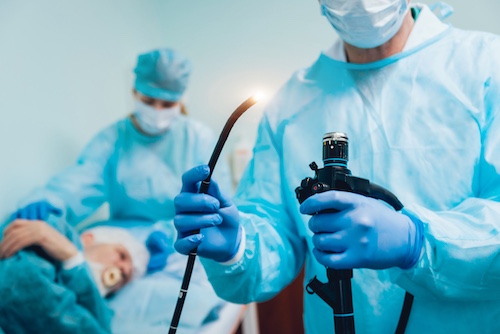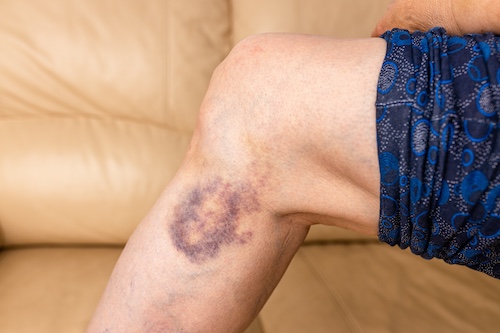Endoscopic Rhizotomy vs Radiofrequency Ablation: Choosing the Right Pain Relief Option
Chronic back pain, neck pain, and joint pain often come from irritated nerve branches near the spine. When physical therapy and other conservative treatments stop working, patients may need a minimally invasive procedure for lasting relief. Two common options are endoscopic rhizotomy and radiofrequency ablation. Both target pain-causing nerves, but they differ in technique, precision, and long-term results. Understanding how each works can help you decide which procedure fits your needs.
In this blog, we explain the differences between endoscopic rhizotomy and radiofrequency ablation to help patients considering an experienced Atlanta endoscopic rhizotomy specialist make an informed decision for chronic back and joint pain relief.
Understanding the Source of Pain
Chronic back and neck pain often starts in the small joints of the spine. Identifying the exact pain source helps determine the most effective treatment, including whether endoscopic rhizotomy or radiofrequency ablation is the right option.
Facet Joints and Pain Signals
Facet joints connect the bones of the spine and allow for movement. These joints are lined with cartilage and surrounded by a capsule of soft tissue. When the cartilage wears down or the joint becomes inflamed, it can lead to facet joint pain. This pain often spreads to the lower back, buttocks, or upper thighs and is commonly diagnosed as facet joint syndrome or lumbar facet joint pain.
The medial branch nerves carry pain signals from the facet joints to the brain. If these sensory nerve fibers remain irritated, they continue sending pain signals, leading to chronic facet joint pain. This is a common cause of persistent localized pain and radiating pain in the lower back and neck.
Sacroiliac Joints and Nerve Irritation
The sacroiliac joints connect the lower spine to the pelvis. These joints support body weight and absorb shock between the upper body and legs. Inflammation or dysfunction here can cause sacroiliac joint pain, which may feel like pain in the lower back, hips, or groin. Sacroiliac joint innervation involves small nerve branches that, when irritated, trigger ongoing pain and muscle spasms.
When Conservative Treatments Are Not Enough
Many patients first try conservative treatments like physical therapy, medication, and local anesthetic injections. A medial branch block may also be used to confirm the pain source. If these methods do not provide long-lasting pain relief, other options must be considered.
Pain that continues despite basic care may need a minimally invasive procedure. Both radiofrequency ablation and endoscopic rhizotomy are options for patients with chronic low back pain, neck pain, or sacroiliac joint pain. Choosing the correct approach depends on how the pain starts, how long it lasts, and how it responds to earlier treatment.
What is Radiofrequency Ablation (RFA)?
Radiofrequency ablation is a minimally invasive procedure used to treat chronic back pain, neck pain, and joint pain by targeting pain-causing nerves.
How Radiofrequency Ablation Works
Radiofrequency ablation uses heat from a specialized probe to disrupt sensory nerve fibers that carry pain signals. A pain physician inserts a thin needle near the affected nerve using fluoroscopic imaging for guidance. Once the needle is in position, a small electrode delivers controlled radiofrequency energy to the nerve. This process blocks the nerve’s ability to send pain signals to the brain.
The procedure is commonly used for conditions like lumbar facet joint pain, sacroiliac joint pain, and facet joint syndrome. It targets medial branch nerves that supply the facet joints and the small nerves around the sacroiliac joints. By disabling these nerves, RFA can provide significant pain relief and improve daily function.
Benefits and Limitations of RFA
RFA is an outpatient procedure performed with local anesthesia. Most patients return home the same day. It does not require incisions and involves minimal damage to surrounding tissues. For many, RFA offers effective pain relief lasting several months.
However, pain recurrence can happen over time. Nerve fibers can regrow, and some patients may need repeat treatments. Traditional percutaneous radiofrequency ablation does not offer direct visualization of the target area, which may reduce precision in some cases. Scar tissue formation and variability in results are also possible.
When RFA is Recommended
RFA is often recommended after other conservative treatments, such as physical therapy and medications, have failed. A medial branch block is usually performed first to confirm the source of the pain. Patients with chronic facet joint pain or sacroiliac joint pain who are not ready for surgical intervention may benefit most from this treatment.
What is Endoscopic Rhizotomy?
Endoscopic rhizotomy is a minimally invasive procedure that treats chronic pain by directly visualizing and targeting the nerves responsible for pain signals.
How Endoscopic Rhizotomy Works
An endoscopic rhizotomy uses a small camera and surgical tools to access the medial branch nerves through a small incision. The camera provides direct visualization of the nerve branches that carry pain signals from the facet joints or sacroiliac joints. The surgeon then cuts or ablates the problematic nerve under visual guidance, reducing the chance of injury to surrounding tissues.
This technique is commonly used for chronic low back pain, lumbar facet joint pain, and sacroiliac joint pain. It is especially effective in cases where traditional percutaneous radiofrequency ablation has not provided long-lasting pain relief. The procedure allows for precise identification and treatment of nerve endings responsible for persistent pain.
Benefits of Endoscopic Rhizotomy
Endoscopic rhizotomy offers several advantages over traditional RFA. Direct visualization improves accuracy and reduces the risk of damaging nearby structures. The procedure causes less trauma to muscle tissue and results in less scar tissue. Many patients experience significant pain relief with fewer complications.
It is performed as an outpatient procedure under local anesthesia or light sedation. Recovery is often quick, and patients return to normal activity within days. Because of its precision, endoscopic rhizotomy may provide longer pain-free survival and reduce the need for repeat procedures.
When Endoscopic Rhizotomy is Used
Endoscopic rhizotomy is recommended for patients with chronic facet joint pain or sacroiliac joint pain who have not responded to conservative treatments or radiofrequency ablation. It is also a strong option for those with pain recurrence or pain that returns after previous procedures. An experienced Atlanta endoscopic rhizotomy specialist can determine if this minimally invasive spinal surgery is appropriate based on the patient’s diagnosis and history.
Comparing Endoscopic Rhizotomy vs Radiofrequency Ablation
Both endoscopic rhizotomy and radiofrequency ablation are minimally invasive procedures used to relieve chronic back pain, but they differ in technique, precision, and long-term results.
Procedure and Technique
Radiofrequency ablation uses a needle and fluoroscopic imaging to deliver heat to the medial branch nerves. It does not involve a camera or direct view of the nerve. The physician relies on imaging and anatomical landmarks to place the needle.
Endoscopic rhizotomy uses a small camera and specialized tools to directly visualize the nerve. The surgeon makes a small incision and uses an endoscope to locate and cut or ablate the nerve under visual guidance. This method offers greater precision and reduces the chance of damaging surrounding tissues.
Accuracy and Visualization
RFA relies on indirect imaging and nerve testing to locate the nerve branches. While effective, it can miss small variations in anatomy. Endoscopic rhizotomy provides a clear view of the nerve and surrounding structures, which improves accuracy and limits tissue trauma.
This difference in visualization often leads to more consistent outcomes with endoscopic procedures. It also reduces the chance of pain recurrence due to missed or partially treated nerve endings.
Pain Relief and Duration
Both treatments aim to provide significant pain relief by stopping pain signals from the facet joints or sacroiliac joints. RFA often provides relief for six months to a year, but some patients experience shorter results due to nerve regrowth.
Endoscopic rhizotomy tends to offer longer pain relief because the procedure allows for more complete treatment of the problematic nerve. Patients often report better long-term outcomes and fewer repeat procedures.
Recovery and Complications
RFA is a shorter outpatient procedure performed under local anesthesia. It has a quick recovery time and minimal discomfort. Endoscopic rhizotomy also allows for same-day discharge but involves a slightly longer procedure and the use of a small incision.
Both methods are safe, but endoscopic rhizotomy reduces the risk of scar tissue, muscle damage, and inaccurate nerve targeting. Patients with chronic facet joint pain, lumbar facet joint pain, or sacroiliac joint pain may benefit from the higher precision of the endoscopic technique.
Choosing the Right Option
The choice between endoscopic rhizotomy vs radiofrequency ablation depends on the patient’s pain history, previous treatments, and response to conservative care. Patients who have not achieved long-lasting pain relief from RFA may consider endoscopic rhizotomy as a next step. An Atlanta endoscopic rhizotomy specialist can help assess which option provides the best chance for effective pain relief and improved function.
Take the First Step Toward Pain Relief
If you’re struggling with chronic back or joint pain, our team at Georgia Spine & Orthopaedics is here to help. Whether you’re considering endoscopic rhizotomy or radiofrequency ablation, we can provide expert guidance and personalized care to find the right treatment for you.
Contact us at 678-929-4494 to schedule your appointment ASAP!








